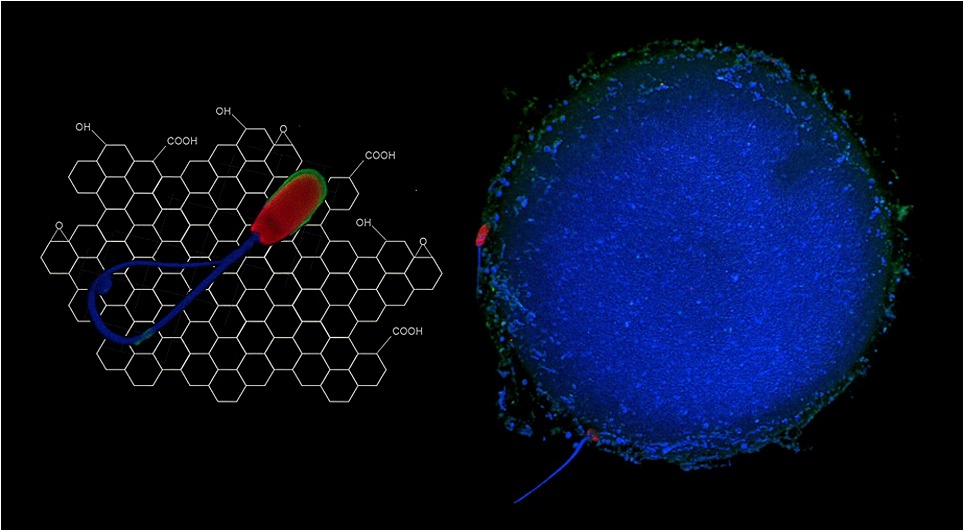https://www.sciencedirect.com/science/article/pii/S0008622317312757#undfig1

Abstract
We realized the exposure of boar spermatozoa to graphene oxide (GO) at concentration of 0.5, 1, 5, 10 and 50 μg/mL in an in vitro system able to promote the capacitation, i.e. the process that allows sperm cells to became fertile. Interestingly, we found that the highest GO concentration (5, 10 and 50 μg/mL) are toxic for spermatozoa, while the lowest ones (0.5 and 1 μg/mL) seem to significantly increase the sperm cells fertilizing ability (p > .05) in an in vitro fertilization experiment. To explain this finding, we investigated the effect of GO on sperm membrane structure (atomic force microscopy) and function (confocal microscopy and flow cytometry, substrate adhesion). As a result, we found that GO is able to interact with spermatozoa membranes and, in particular, it seems to be able to extract the cholesterol, which is a key player in spermatozoa physiology, from plasma membrane of boar spermatozoa incubated under capacitation conditions. In our opinion, these results are very important because they allow identifying either a plausible mechanism of GO toxicity on spermatozoa and new strategies to manage sperm capacitation.
